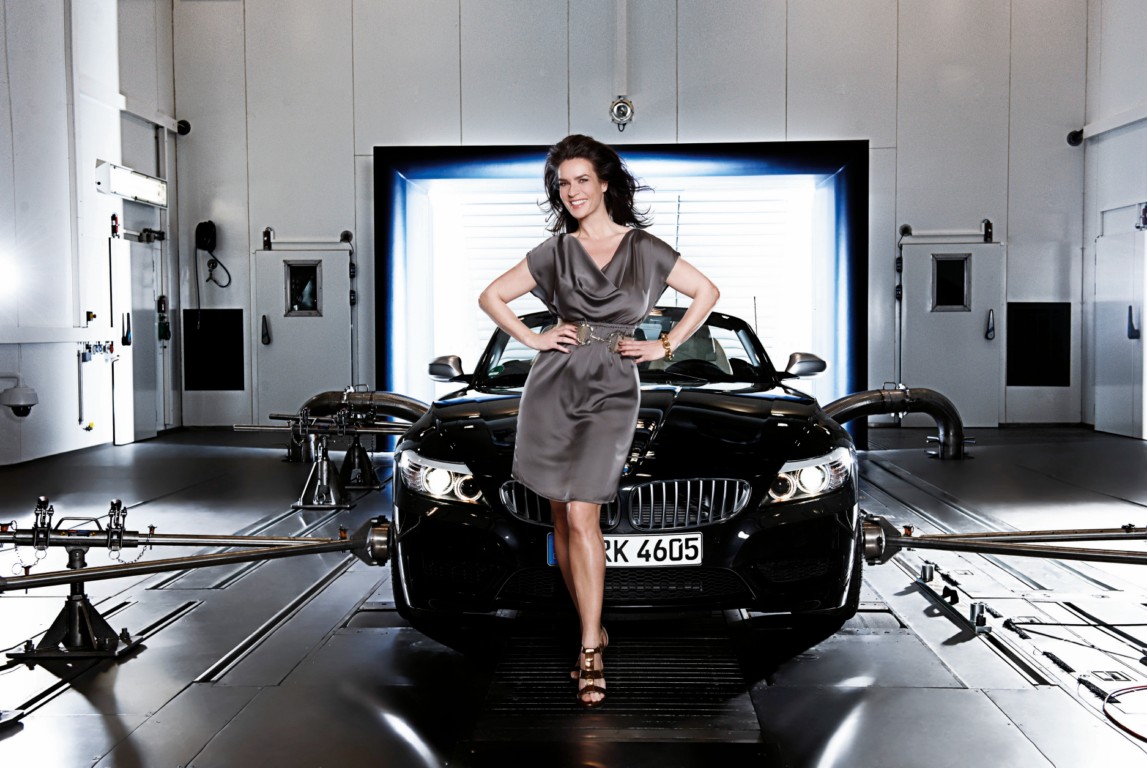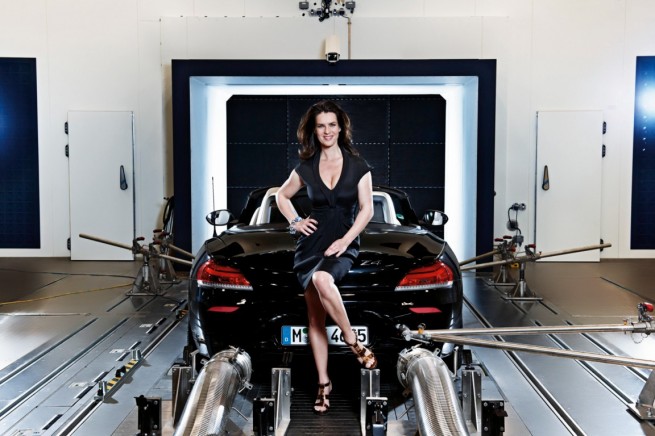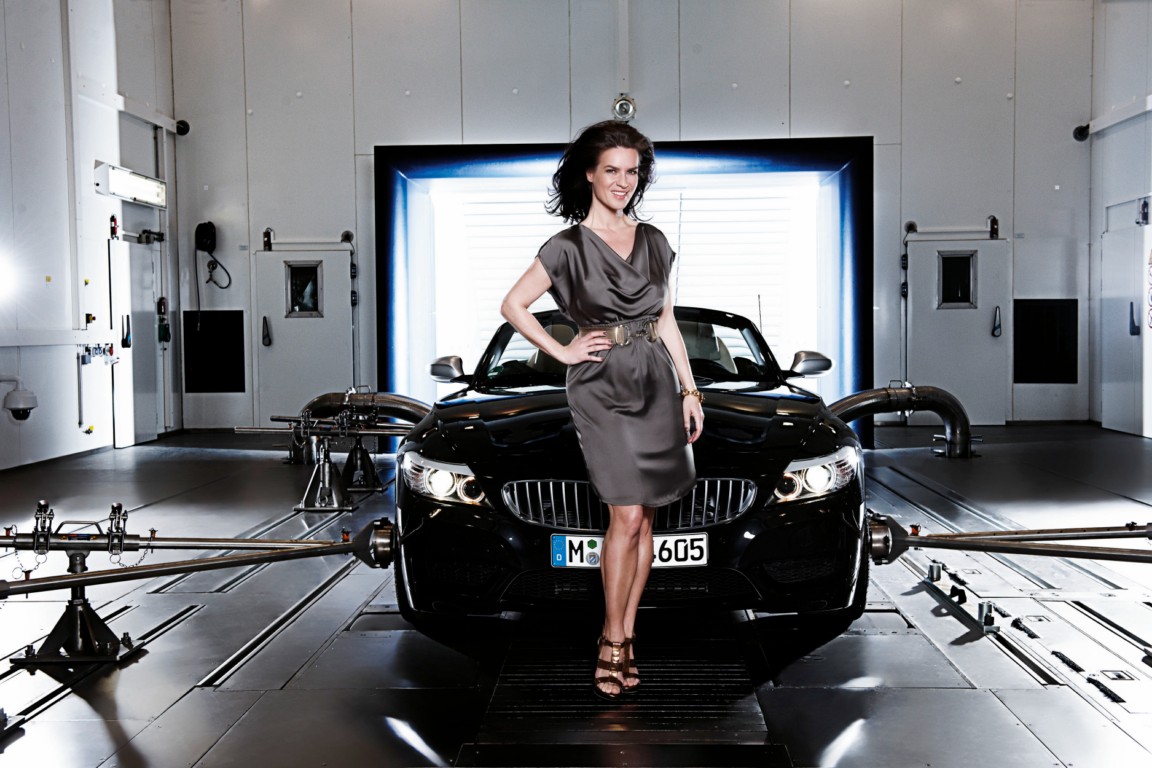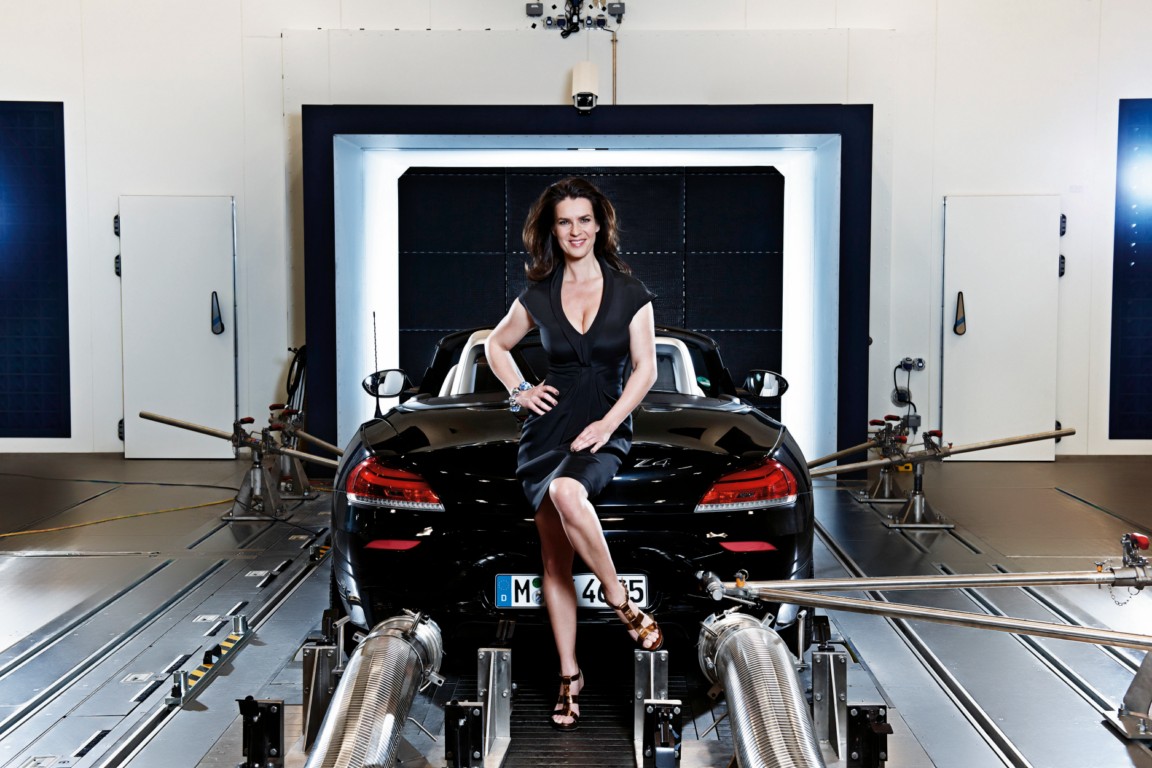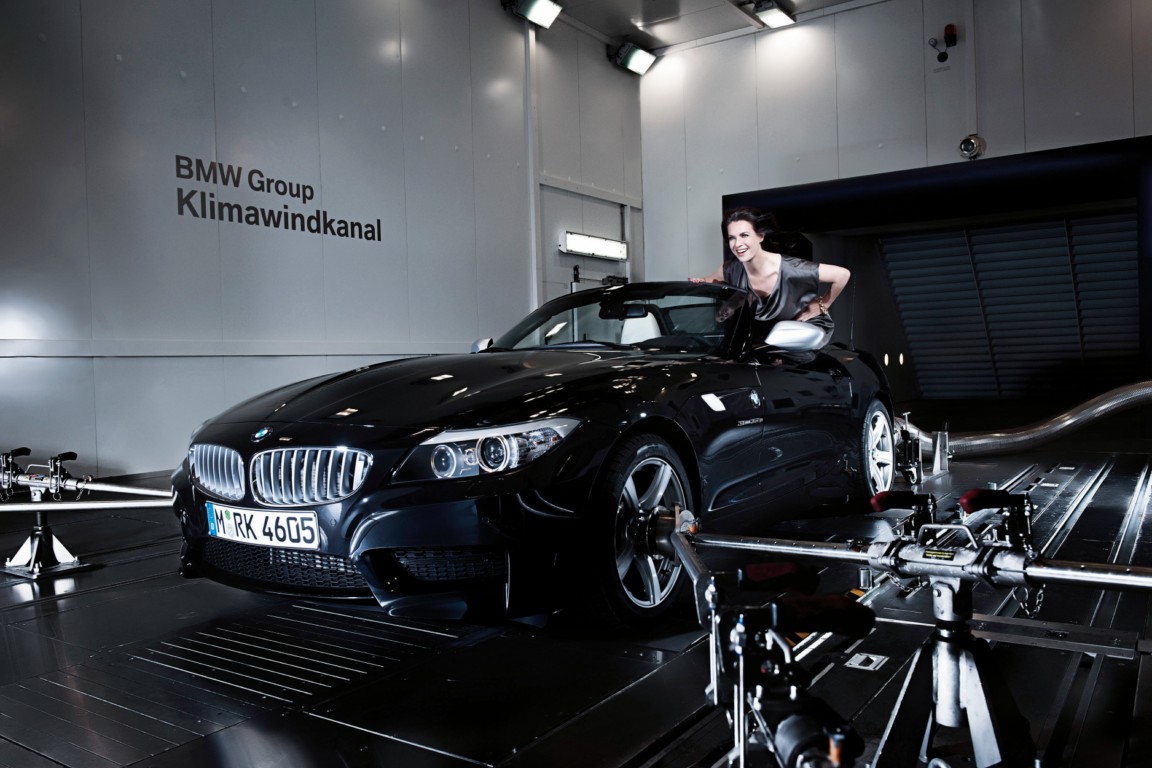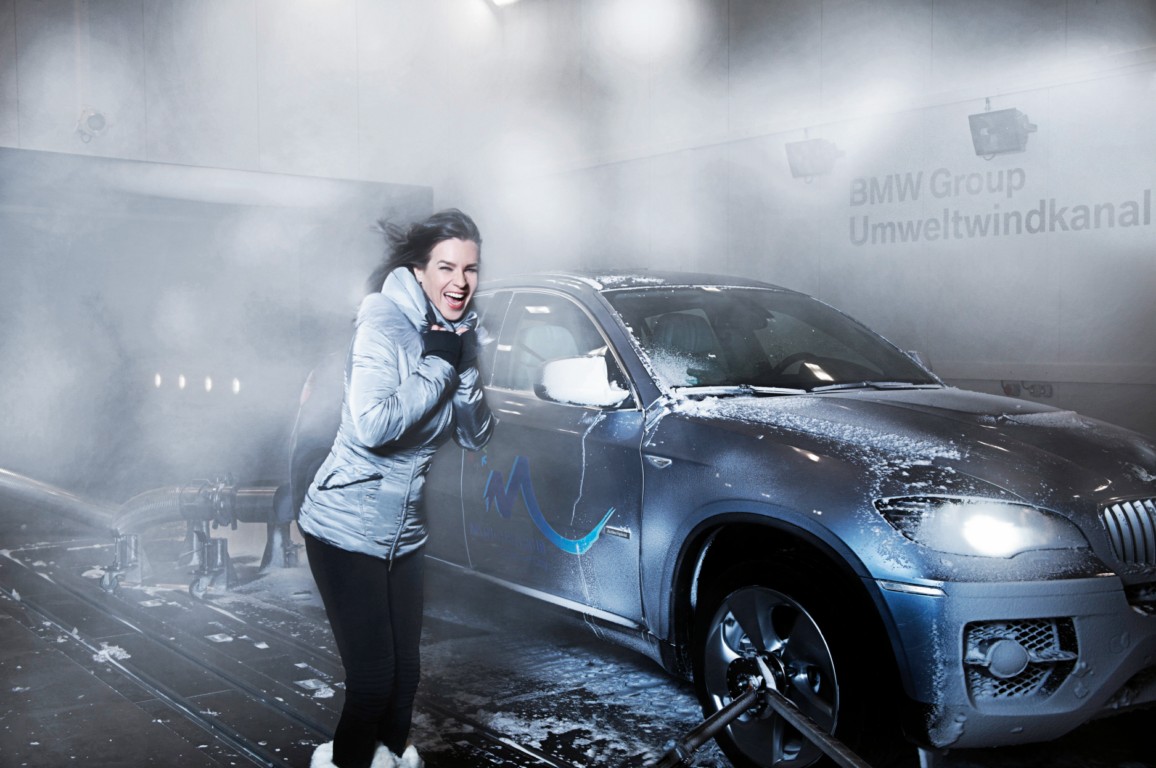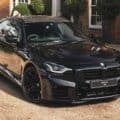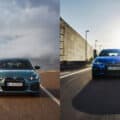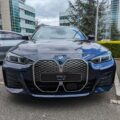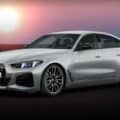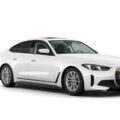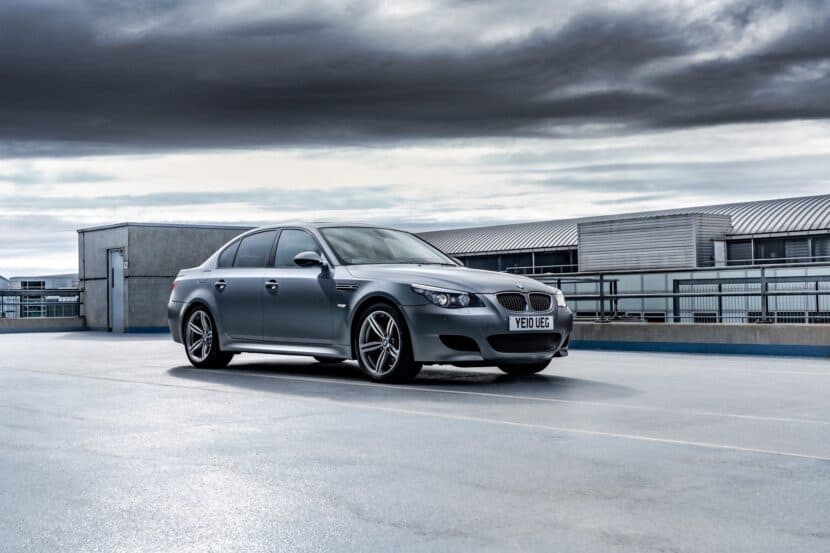Press Release: Sun, rain, ice and snow “at the push of a button” – all climate zones of the world in one building in northern Munich. This piques curiosity and provides for optimal conditions for a special type of photo shoot. “I heard you can make weather here.” With this sentence, the two-time Olympic champion Katarina Witt greeted the Manager of Efficient Dynamics at the BMW Group, Dr. Johannes Liebl, during her visit to the BMW Group’s Energy and Environmental Test Centre (ETC). “I’d like to have some sun – I’ve had enough ice and snow this last winter.”
This wish was the test engineers’ command. And so Witt experienced a convertible-car feeling with the summer styling to go with it – headwind and sun. However, the BMW Z4 “drove” in the climatic wind tunnel – not on the street, but on fixed-in-place test rollers. The BMW developmental engineer Liebl explained why sun and heat are simulated: “Here, we test extreme heat levels of around 45°C on cooling systems, air-conditioning and engines in order to reproduce conditions in a Middle Eastern summer, for instance.
Since we’re able to adjust climatic parameters more precisely at the test facility than on the street, this makes for very precise results. This helps us design our engines and cooling systems in such a way that they deliver optimal performance while simultaneously reducing energy consumption. Perfectly in line with BMW Efficient Dynamics.”
Besides the climatic wind tunnel, which can reproduce speeds of up to 250 km/h, temperature (from minus 10°C to plus 45°C), sun, wind and humidity under simulated conditions, there are also four other thermal wind tunnels and test chambers in the ETC. So, shortly after the sunbath, the BMW Group’s Olympic ambassador then changed into a winter outfit and headed into the cold chamber. “There’s supposed to be ice here. Can I get out my ice skates?” asked Witt.
“Normally the cold start and de-icing tests take place here, because our vehicles have to work even under extreme conditions, such as in northern countries or Alaska”, explained Liebl. While laborious hot and cold country tests were necessary for many milestones in the development process of vehicles and motorcycles before now, these tests can now take place in Munich regardless of the time of year. This makes the development process extremely efficient because, within eight hours, all climate zones of the world can be “driven through”. And the results make the BMW Group’s vehicles even more dynamic and fuel efficient.
In the ETC environmental wind tunnel, precipitation can be simulated in different aggregate states, i.e. snow and rain. The ice skater was immediately in her element: “It’s absolutely fascinating – I wouldn’t have thought that you could produce snow at the push of a button. And the experts even thought of the perfect car for me. A BMW ActiveHybrid X6 with the logo from Munich’s bid for the 2018 Olympic and Paralympic Winter Games. With this dynamic, yet environmentally friendly hybrid technology, we’re promoting sustainable games in Munich.” The snow simulation, of course, has a formidable background. Windscreens and headlights, for example, are tested here to ensure there are good visibility conditions even in snow, or that braking power is ensured even in rain. Witt added: “The logo remained completely free of snow and ice and easy to recognise. BMW is optimally equipped for the winter. The 2018 Winter Games can come – to Munich.”
The efficient testing systems of the new Energy and Environmental Test Centre make a valuable contribution to helping the BMW Group maintain and expand its leading role as the most sustainable automobile manufacturer in the world.
[Source: BMW ]


